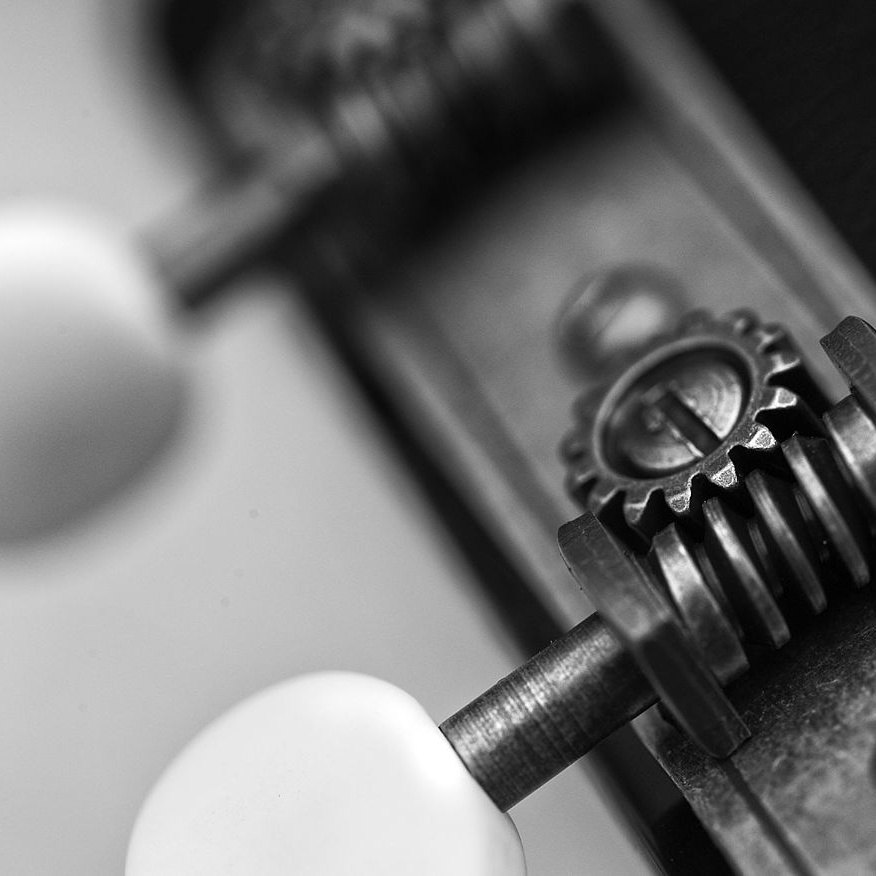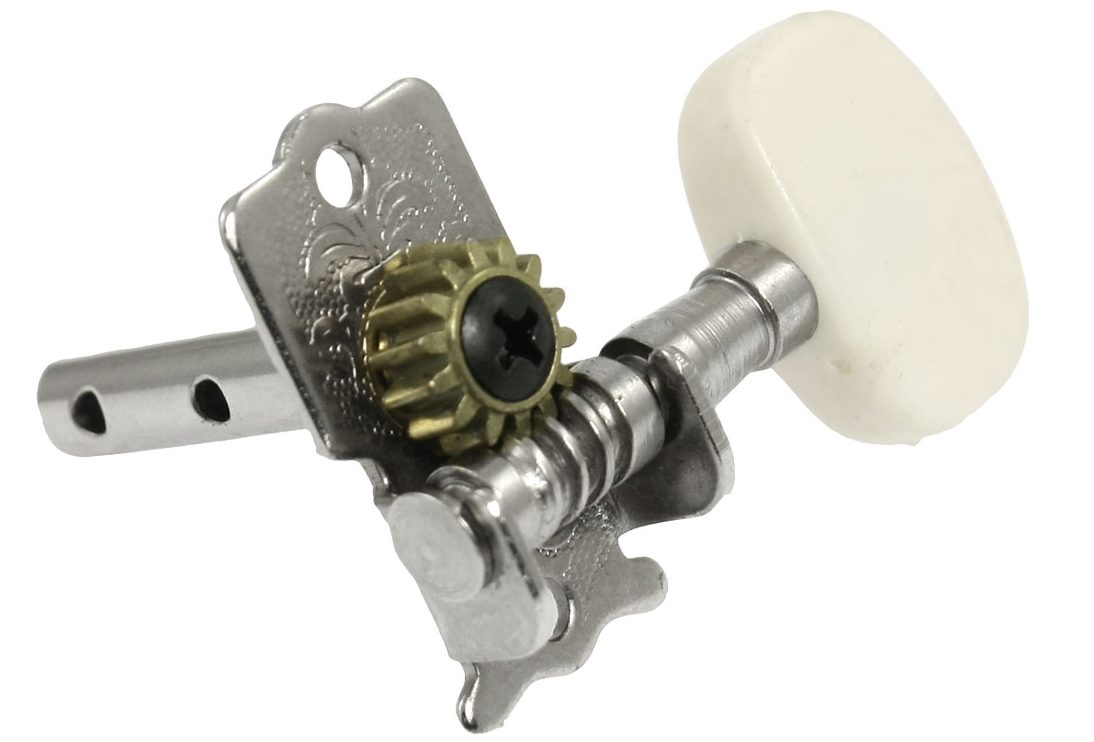
One of the most crucial things for guitarists is to keep their guitars in tune. For this reason, it’s important to know how to replace your damaged/ faulty guitar tuners (by which we mean the tuning pegs of course – not the electronic guitar tuners used for tuning!) Guest blogger Joseph Nicholls explains what you need to know.
Imagine planning for a major concert or an upcoming gig and then during your practice session your guitar tuning suddenly malfunctions. This could be either as a result of wearing out your tuners, or them getting getting broken. This can be a setback to your quest as an artist, right?
Whether your guitar uses locking tuners or traditional designs, a guitar tuner makes your play feel spot on and your guitar sound great. Besides, they help identify and adjust to the pitch of your preference by opening or closing the strings.
Therefore, whenever there is an inevitable need to replace your tuners, you might be confused whether to replace some knobs of tuners or a whole set of tuners.
Whichever is your choice, before you rush to replace your tuner, it is important to understand possible reasons that might lead to your guitar tuner wearing out or getting broken. This will assist you to know exactly how to effectively go about the replacement and get your guitar back in tune.

Changing the tuners of your guitar is actually easy…
What Might Lead To Replacing Your Guitar?
Firstly, as you keep using your guitar, the tuners are prone to the wear and tear over time. This could be associated to the frequent pressure they are subjected to while playing the guitar.
Consequently, they end up improperly fitting each other or at the worst, not fitting together at all. Attempts to tune your guitar to the right pitch could result to sudden skipping of the gear teeth.
At the worst, insisting on trying them out, strings might end up getting out of hand calling for a complete replacement.
Secondly, your guitar can accidentally drop on a hard surface damaging your tuners. Also, there are chances of the buttons cracking due to poor or no oiling of the gears. This is the point you feel the need to apply more pressure on the buttons to get your tune.
In such case, the tuning quality might get compromised to the extent of the damage, hence possible need to replace them.
Ways of Replacing the Tuner Of A Guitar
Impressively, you don’t have to be worried if your tuner can’t function properly and has to be replaced.
Have you ever been on the receiving end while playing your guitar at home, and experienced regular guitar tuner breakdowns?
Well, I recommend you pay attention to the kind of problem necessitating the need to replace your tuners. Check whether it is the entire set of tuners you have to replace or just the tuning buttons. It is also important you take into account the kind of guitar you have.

Step-by step guide:
- If it is your tuning buttons that are broken, consider taking into perspective these tips to get your tuners fixed and get your fun back. The procedure doesn’t have to be complicated;
- Firstly, loosen off the guitar strings to establish the extent of the damage. Be careful at this point as strings can unwind fast and end up injuring you.
- You will have to remove all the strings the same way if you realize that a number of tuners have to be replaced. Notably, if you also don’t want to keep wasting time and experience regular replacement of the tuners, replacing all of them will a great idea too.
- If you have an electric guitar, I recommend you check as to what extent your tuner is damaged, otherwise, if it is a single or a number of tuning buttons that need replacement, you don’t have to replace the whole set. This will equally save you extra replacement costs, saving your energy.
- Ensure you buy new exact fitting tuners from your local store. It is imperative you identify the right tuning buttons that will fit in well before screwing them into place.
- At this point sparing some time to check out expert ideas or research on reviews on appropriate tuner replacement options will be invaluable.
- If you happen to have a regular guitar, get an appropriate small-sized screw able to unscrew the screws from the neck of your guitar at the tuning buttons.
- If you don’t have also much of the ideas on how to unscrew your specific type of guitar, do some research or seek professional guidance before you proceed.
- After unscrewing is done and the screws slip off, replace them with your correct new tuners.
- If you happen to have forgotten how to replace all parts back into place, reflect on how you started. Fixing the new tuners should be done carefully to avoid fitting in a wrong tuner or spoiling the finish.
Other Important Aspects to Consider
What if you can’t find the exact replacement tuner for your guitar and you need to get back into action quickly?
Therefore, I suggest you be keen to the measurements of your tuner including the right height, size of the hole where the original tuner was fitting, the mounting pattern of your screw and arm length.
Are you finding it necessary to do some modification on your type of guitar to accommodate the replacement tuners? Such modification might include the need to enlarge the pegheads holes for big-sized shafts. Your peghead holes need to match the spacing of the tuners when mounted on the plate of your guitar.
While enlarging the peg holes, be careful not to chip off the finishing of your instrument or the peghead veneer. Remember; ensure you have the correct specifications if you have to drill new holes. It is also preferable to check the tuner whether once screwed into the hole; the brushing is able to fit perfectly on the peghead.
Your guitar tuner should be positioned at a distance in such way is it easy to access the string hole. This is to facilitate stable tuner fixing to avoid them becoming loose or coming off.
Conclusion
When buying your new tuners, check for those tuners that are too smooth as they might give you challenges while screwing them in. I hope you tuner replacement is an informed procedure that you can adapt to easily for a smooth play of your guitar.
By Joseph Nicholls

Thanks a lot such type of valuable blog. I am a professional guitarist and I need to replace tuner buttons of my guitar. Tuner buttons one of the vital parts of a guitar and in this blog a very clear description has been mentioned how to replace the damaged tuners. I have already purchased guitar tuner buttons to replace as per the process mentioned here.